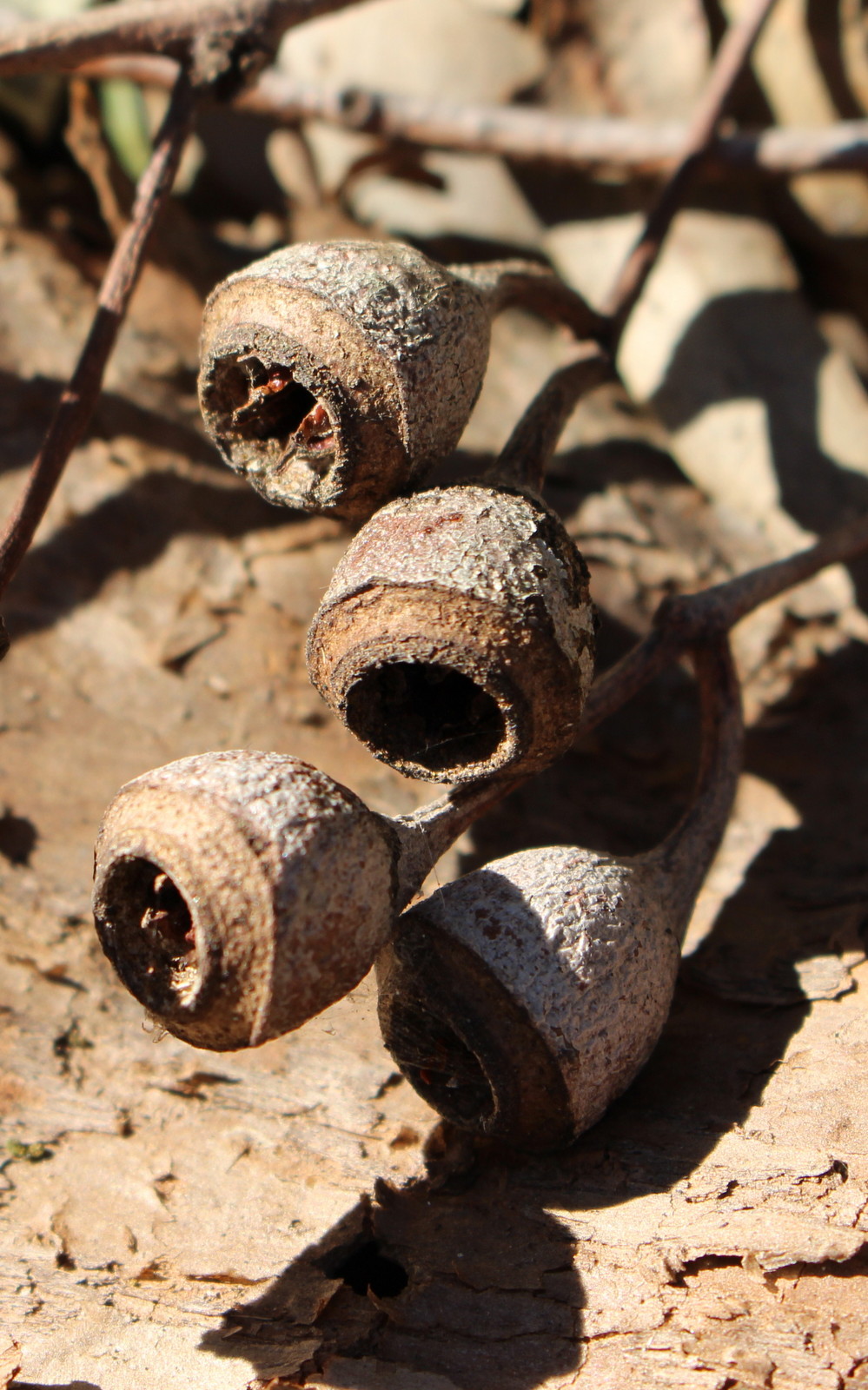Eucalyptus Longifolia on:
[Wikipedia]
[Google]
[Amazon]
''Eucalyptus longifolia'', commonly known as woollybutt, is a species of medium-sized tree that is endemic to eastern Australia. It has thick, fibrous bark on the trunk and larger branches, lance-shaped to curved adult leaves, flower buds in groups of three, white flowers and cup-shaped to cylindrical or hemispherical fruit. The drooping flower heads in groups of three are a distinguishing feature. It grows in heavy soils often near water.

Description
''Eucalyptus longifolia'' is a tree that typically grows to a height of and forms a lignotuber. It has rough, fibrous to flaky bark on the trunk and branches thicker than about . The trunk diameter is up to . Young plants and coppice regrowth have stems that are more or less square in cross-section and leaves that are egg-shaped to broadly lance-shaped, long and wide. Adult leaves are lance-shaped to curved, the same dull greyish green on both sides, long and wide, on a petiole long. The flower buds are arranged in groups of three in leaf axils on an unbranchedpeduncle Peduncle may refer to:
*Peduncle (botany), a stalk supporting an inflorescence, which is the part of the shoot of seed plants where flowers are formed
*Peduncle (anatomy), a stem, through which a mass of tissue is attached to a body
**Peduncle (art ...
long, the individual buds on pedicels long. Mature buds are pendulous, oval to diamond-shaped, long and wide with a conical operculum. Flowering occurs from March to June and the flowers are white. The fruit is a woody, cup-shaped to cylindrical or hemispherical capsule long and wide with the valves near rim level.
Taxonomy
''Eucalyptus longifolia'' was first formally described in 1822 byJohann Heinrich Friedrich Link
Johann Heinrich Friedrich Link (2 February 1767 – 1 January 1851) was a German naturalist and botanist.
Biography
Link was born at Hildesheim as a son of the minister August Heinrich Link (1738–1783), who taught him love of nature throug ...
in his book, ''Enumeratio Plantarum Horti Regii Berolinensis Altera''. The specific epithet (''longifolia'') is derived from the Latin words ''longus'' "long" and ''folium'' "leaf".Backer, C.A. (1936). ''Verklarend woordenboek der wetenschappelijke namen van de in Nederland en Nederlandsch-Indië in het wild groeiende en in tuinen en parken gekweekte varens en hoogere planten'' (Edition Nicoline van der Sijs).
Within the genus ''Eucalyptus'', this species belongs in the subgenus ''Symphyomyrtus''.
Distribution and habitat
The range of woollybutt is from Morisett in central New South Wales south to the Victorian border. In the north of its range it is more scattered in its distribution, but becomes more common south of Nowra to Bega. It generally grows on clay soils and floodplains, sometimes in areas with poor drainage, in valleys and low areas. In open sclerophyll forest, it grows alongside such trees as white mahogany ('' E. acmenoides''), grey box ('' E. moluccana''), forest red gum ('' E. tereticornis''), and rough-barked apple ('' Angophora floribunda''), while in swampy areas it is found with swamp mahogany ('' E. robusta'') and paperbark species such as snow-in-summer (''Melaleuca linariifolia
''Melaleuca linariifolia'' is a plant in the myrtle family Myrtaceae, and is endemic to eastern Australia. It is commonly known as snow-in-summer, narrow-leaved paperbark, flax-leaved paperbark and in the language of the Gadigal people as ''budj ...
''), prickly paperbark ('' M. styphelioides'') and swamp paperbark ('' M. ericifolia'').
Ecology
The woollylbutt can regenerate via epicormic buds if its crown is damaged by bushfire. Trees live for over a hundred years. Along with many bird species the grey-headed flying fox (''Pteropus poliocephalus'') and little red flying fox (''P. scapulatus'') feed on nectar produced by the woollybutt flowers.Uses
The dark red timber is hard and resistant to water, and termites. It has been used in railway sleepers and other general construction. The woollybutt is also important in beekeeping and the honey industry. It is useful as a shade tree or windbreak in paddocks, but grows too large for the average garden.
References
{{Taxonbar, from=Q3664036 longifolia Myrtales of Australia Plants described in 1822 Trees of Australia Flora of New South Wales